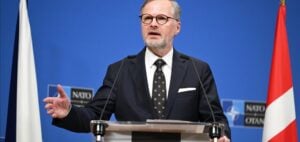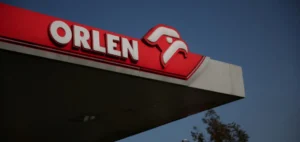The Inflation Reduction Act (IRA) provides for an investment of over $369 billion to advance climate ambitions.
An old dispute with China
The IRA attracts European manufacturers in particular by granting tax credits that are more advantageous than those in Europe. However, since its implementation, the IRA has raised concerns about regulatory compliance. First, there are the inaccuracies associated with the various U.S. government guidelines for IRA tax credits.
In November, the U.S. Treasury Department provides additional details. For example, it publishes guidance on current wage and learning requirements. Then there are the constraints of the UFLPA (Uyghur Forced Labor Prevention Act), which went into effect in June 2021 in the United States.
The UFLPA bans the import of products made in the Xinjiang region of China. The United States accuses China of serious abuses against the Uyghurs. The U.S. text imposes constraints on Chinese importers.
Indeed, importers, especially those from the Xinjiang region of China, should not benefit from any location-related advantages. Thus, they must be able to prove that their products and raw materials do not come from companies using forced labor. In case of non-compliance, importers can be fined up to $250,000.
This measure further aggravates the already conflicting relations between the United States and China. However, this ban on imports of forced labor products into the United States dates back to 1930. In effect, it was the Smoot-Hawley tariff law.
On December two, 2020, the U.S. Bureau of Commerce, Customs and Border Protection ordered border crossings to block shipments containing cotton. The WRO already wanted to block products from Xinjiang. Beijing refuted these accusations, stating that there was no forced labor in China.
Between constraints and hesitations.
The IRA has constraints related to the Uyghur Forced Labor Prevention Act (UFLPA) and the guidelines for taking advantage of the program’s many tax credits. This device is expected to bring significant benefits to the U.S. solar industry. However, the solar industry is awaiting the outcome of several major policy issues.
One of the issues is customs control in the context of the application of the UFLPA on solar equipment imports. Uncertainty of UFLPA compliance jeopardizes relief for the solar supply chain. The requirements for demonstrating compliance, which came into effect last June, are stringent compared to the Hold Harmless Order.
In addition, the traceability of the quartzite supply used in solar equipment appears more difficult. There are also many questions regarding the documentation required to demonstrate compliance with the UFLPA. Despite expectations of near-term release, CBP (border protection) is not making major releases of solar equipment.
A significant delay is accumulating since the Withold Release Order (WRO) released the retentions last fall. This leads to hesitation about the exact timing of supply chain relief. The other issue is the vagueness of the various U.S. government guidelines for IRA tax credits.
The solar industry is awaiting guidance from the U.S. Treasury Department. They relate to qualification for various tax credits and additions within the IRA. But without additional details from the U.S. government, evaluating qualified projects is complicated.
The Treasury Department is collecting public comments on various aspects of IRA tax credits. In November, guidance on the current wage and learning requirements was released. These clarifications generally met the industry’s expectations.
A tool to seduce industries
IRA-driven demand and supply normalization will increase large-scale installations by 84% in 2023. By 2027, 150GWdc of utility-scale solar installations are expected to emerge. Nonetheless, commercial solar is lagging behind in installations during the third quarter.
Commercial solar power will grow by 17% in 2023 after a year of stagnation. Like commercial solar, community solar is also falling behind. Thus, in 2023, its growth is expected to remain steady and resume in 2024 as California’s new community solar market bears fruit.
The IRA protects jobs in the United States. However, Europe risks losing investment from European manufacturers. Already weakened by the war in Ukraine, Europe is proposing different alternatives.
Despite a delay due to UFLPA compliance and project selection guidelines, European industry is looking to the United States. In Europe, more and more manufacturers are announcing that they are considering investing in the United States. In recent weeks, Volkswagen and BMW have been looking to expand their production capacity in Germany.
Thus, the Swedish company Northvolt could finally open the battery gigafactory that it was initially supposed to install in Sweden. In Belgium, the chemical company Solvay decided to participate in a giant battery project on the other side of the Atlantic. The French company Saint-Gobain will expand in California.
The IRA combined with the technology embargo against China increases the differential with the United States. Europe seems to be forgotten in this economic competition. Concerned about the war in Ukraine, Europe could lose strategic investments that countries wanted to make in Europe.
The European response
European Commission President Ursula Von Der Leyen calls the IRA measures unfair competition from the United States. Europe wants to react and propose the implementation of a European plan. The European plan will make it possible to relax the framework for state aid to companies to encourage them to continue investing in Europe.
It will also support the strengthening of the RePowerEU plan to develop renewable energies and to free Europe from Russian hydrocarbons. The President also defends a European sovereignty fund to develop a common industrial policy. It will allow investment in research and innovation projects such as hydrogen, semiconductors or quantum computing.
However, European solar shows no signs of slowing down. The average forecast for 2023 is 53.6 GW of additional solar energy in the European Union. Indeed, SolarPower Europe’s annual solar progress report reveals that the Union will install 41.4GW of solar power by 2022.
This is an increase of 47% compared to 28.1GW in 2021. In addition, Germany remains the EU country with the most installations per year (7.9GW added in 2022). Followed by Spain (7.5GW), Poland (4.9GW), the Netherlands (4.0GW) and France (2.7 GW).
On a year-over-year basis, the Union’s total solar generation fleet increases by 25% to 208.9GW, up from 167.5GW in 2021. The technology embargo by the U.S. is mainly aimed at slowing down China’s technological and military development. It also aims to maintain U.S. technological leadership.
Thus, the block logic on which the leadership of the United States is based is gradually disappearing. The United States is gradually losing the support of its allies by disengaging from multilateralism. In this context, it seems urgent to calm the tensions between the United States and China.






















